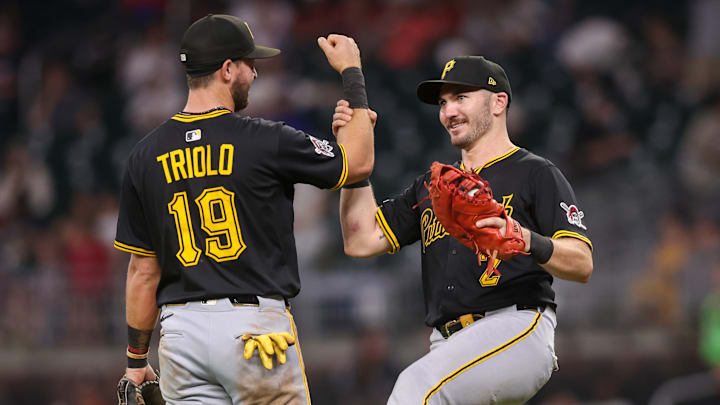The curtain officially fell on the Pittsburgh Pirates’ season on Sept. 15, when the team was mathematically eliminated from playoff contention. That date marked the franchise’s 10th consecutive season without a postseason appearance, a sobering reminder of how long October baseball has eluded Pittsburgh. As the regular season winds down, the Pirates’ focus naturally shifts from box scores to big-picture questions. Like other non-playoff teams, their eyes are already fixed on 2026. But unlike many rebuilding clubs, Pittsburgh sits at a crossroads: they’ve developed an impressive young pitching staff and sprinkled in star-level talent, yet the roster remains incomplete. The challenge now is deciding whether to treat this core as a foundation for contention — or to let the opportunity slip by as just another fleeting spark.
That makes the coming weeks a critical time for reflection. While the postseason marches on without them, the Pirates must wrestle with defining questions that will shape not just their offseason, but the future direction of the franchise. Here are the three biggest issues looming over Pittsburgh as 2025 comes to a close.
3 burning questions Pirates must address before the end of 2025 postseason
3. Offensive struggles: How do they balance bats with arms?
The 2025 season put Pittsburgh’s offensive shortcomings under a harsh spotlight. The Pirates finished 28th in MLB in WAR (6.8), struck out at the fifth-highest rate (23.6 percent), and hit a league-worst 117 home runs — a staggering gap compared to even middle-tier lineups. Those numbers aren’t just concerning; they’re glaring red flags for a club with legitimate postseason potential.
The pitching staff has proven it can compete with the best, ranking fifth in WAR (19.0), but even elite arms can’t consistently overcome an offense that fails to produce. For the Pirates, this is more than a statistical imbalance — it’s a philosophical crossroad. Do they lean even harder into their run-prevention identity, or do they finally spend aggressively to bring in bats that can balance the roster? The front office must weigh how much of the budget should be allocated to offensive upgrades, because at some point, a team can’t pitch its way to a championship if the bats go silent in October.
2. Will ownership commit to sustaining a winner?
For decades, the Pirates’ financial hesitancy has defined them as much as their on-field results. Even as the front office has unearthed talent and developed a promising young core, payroll limitations have consistently capped how far the team could go. That tension is now sharper than ever. With a rotation led by Paul Skenes, and with stars like Oneil Cruz and Bryan Reynolds, Pittsburgh finally has the foundation to be a perennial contender. But talent alone won’t bridge the gap between “up-and-coming” and “legitimate threat.”
The real test lies with ownership. Will they backstop the roster with veterans, spend in free agency, and keep the core together through arbitration and beyond? Or will fans be left watching another promising window close before it ever fully opened? For a fan base starved for consistent success, the answer to this question will say more about the Pirates’ future than any single move on the field.
1. Is Oneil Cruz the franchise cornerstone or a streaky talent?
Few players in baseball inspire as much awe — or as much debate — as Oneil Cruz. At 6-foot-7 with a rocket arm and tremendous raw power, Cruz looks every bit the modern face of the franchise. But heading into his first year of arbitration, the Pirates are at a crossroads with him. For all the flashes of brilliance, inconsistency has been just as defining. Cruz finished his fifth season with the Pirates slashing .200/.298/.379. His high strikeout rate (31.9) and streaky production leave open the question: is he the centerpiece of Pittsburgh’s long-term plans, or simply a tantalizing but unreliable piece of the puzzle?
The decision isn’t just about Cruz himself, it’s about what kind of identity the Pirates want to embrace. Can they afford to bank on a player whose ceiling is sky-high, but whose floor could undermine the offense? Or do they need to surround him with steadier bats and view him as part of the supporting cast rather than the face of the franchise? The front office must answer this soon, because how they value Cruz will dictate how they build the roster around him.
A decade without October baseball has tested the patience of a proud fan base, and the Pirates now sit at a fork in the road. Their pitching foundation is legitimate, but the surrounding decisions will determine whether the next chapter brings sustained relevance or yet another rebuild.
